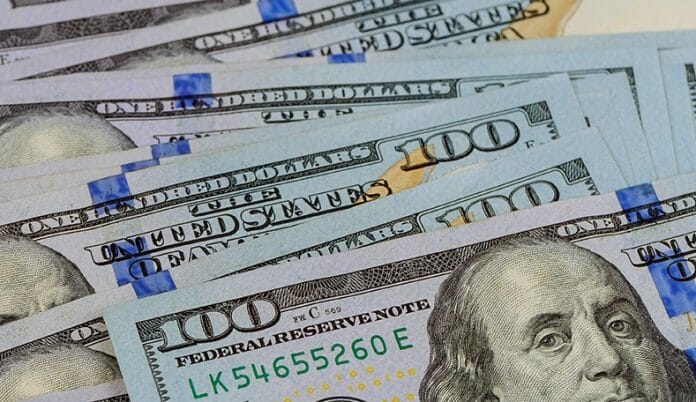The US dollar has showcased an unexpected resilience following the dovish stance maintained by the Federal Reserve. Surprisingly, the dollar surged to a 4 ½ month high against its major counterparts, despite initial speculations of a downturn.
While UST nominal and real yields witnessed a decline, the dollar capitalized on weaknesses observed in the Yen and the Yuan.
The Fed’s decision to uphold three rate cuts in the dot plot for 2024 seemed to contradict the prevailing economic indicators, notably the above-forecast inflation data for January and February. This incongruity raises concerns regarding potential dissent within the FOMC if incoming data challenges the current optimistic inflation outlook.
A slowdown in employment growth could be a critical factor in aligning viewpoints towards a potential rate cut.
Despite the Fed’s confidence in inflation slowing to 2% over time, upcoming data releases, particularly the PCE inflation data for February, may test this resolve. January witnessed a significant uptick in core inflation, emphasizing the challenge in achieving the desired inflation target.
While the Fed maintained the fed funds rate range at 5.25%-5.50%, the retention of three rate cuts in the dot plot for 2024 surprised the market, especially amidst upward revisions to inflation and GDP growth forecasts. Fed Chair Powell reiterated the Committee’s commitment to combatting inflation but emphasized the necessity of more data to bolster confidence in their stance.
Looking ahead, the Fed’s projections for 2024, including a maintained dot at 4.60% with upward revisions for 2025 and 2026, alongside adjustments to the LT equilibrium rate, underscore the complexities in forecasting economic trajectories.
In the eurozone, the euro struggled against the dollar, hovering near 1.08, despite lower US bond yields post-Fed decision. The correlation between EUR/USD and USD/CNH remained significant, reflecting commercial trade links and the impact of US bond yields on both pairs. Concerns regarding a potential adjustment in the Yuan’s FX regime to stimulate Chinese economic growth further compounded pressures on the euro.
Amidst mixed economic indicators in the euro area, the conclusion from the recent Watchers conference suggests a potential rate cut in June, following the publication of negotiated wage growth data for 1Q. However, uncertainty looms as ECB officials express differing views on the timing of rate adjustments.
The financial landscape remains dynamic, with the dollar defying expectations post-Fed decision, while the euro grapples with challenges amid divergent economic signals. As markets await further data releases and central bank actions, volatility and uncertainty are likely to persist, shaping investment strategies in the coming months.
Market commentary and analysis from Luca Santos, currency analyst ACY Securities









